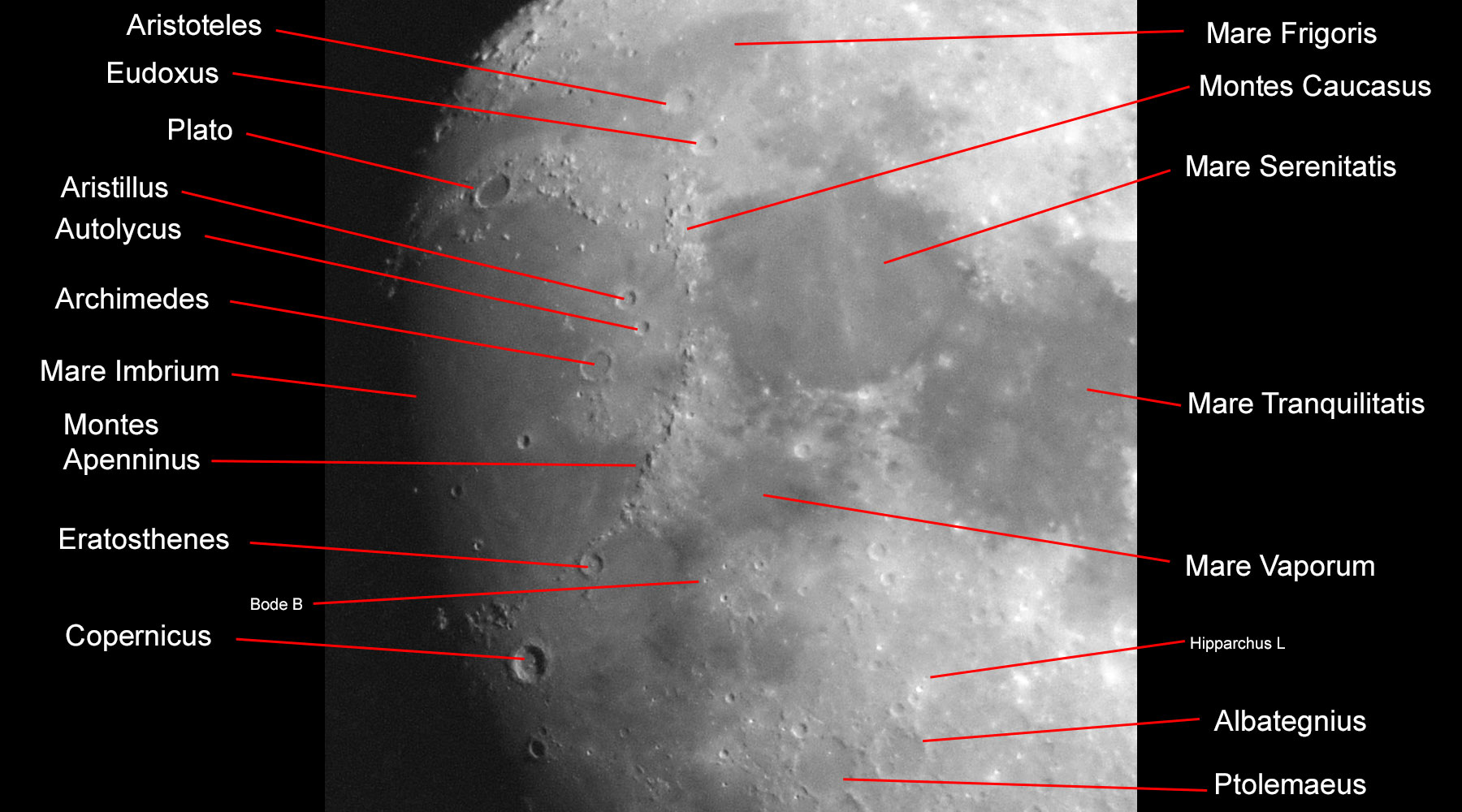Walking the Moon with my own Photos - Sections of Moon Photos Part 1
On these pages I do "moon walks" on the basis of my own photos. In other words, I try to name the objects on my lunar photos to get to know the moon better. Maybe these pages will help others to get to know the moon better as well...
On this page and on a second one, I present enlarged sections of certain regions on the moon so that the objects are easier to recognize.
See also Sections of Moon Photos - Part 2 - Back to the overview of my "moon walks".
Introduction
On this page and on a second one, I present enlarged sections taken from other photos in order to highlight certain details. The photos are rotated by 180 degrees or mirrored so that they correspond to the normal visual impression, but they are often somewhat skewed.
See also Sections of Moon Photos - Part 2.
I determined smaller craters using the Virtual Moon Atlas, which I use in the Windows version, because I cannot convince the Macintosh version to run correctly on my computer. Definitely, one or the other crater still has the wrong label...
Photos
Northern Hemisphere
Plato
The crater Plato was illuminated by the sun on February 23, 2018 (Half Moon at shortly after 9 a.m.).
Aristillus B (8 km diameter), Kirch (12 km diameter), and Egede A (13 km diameter) serve as examples of small craters that can be recognized.
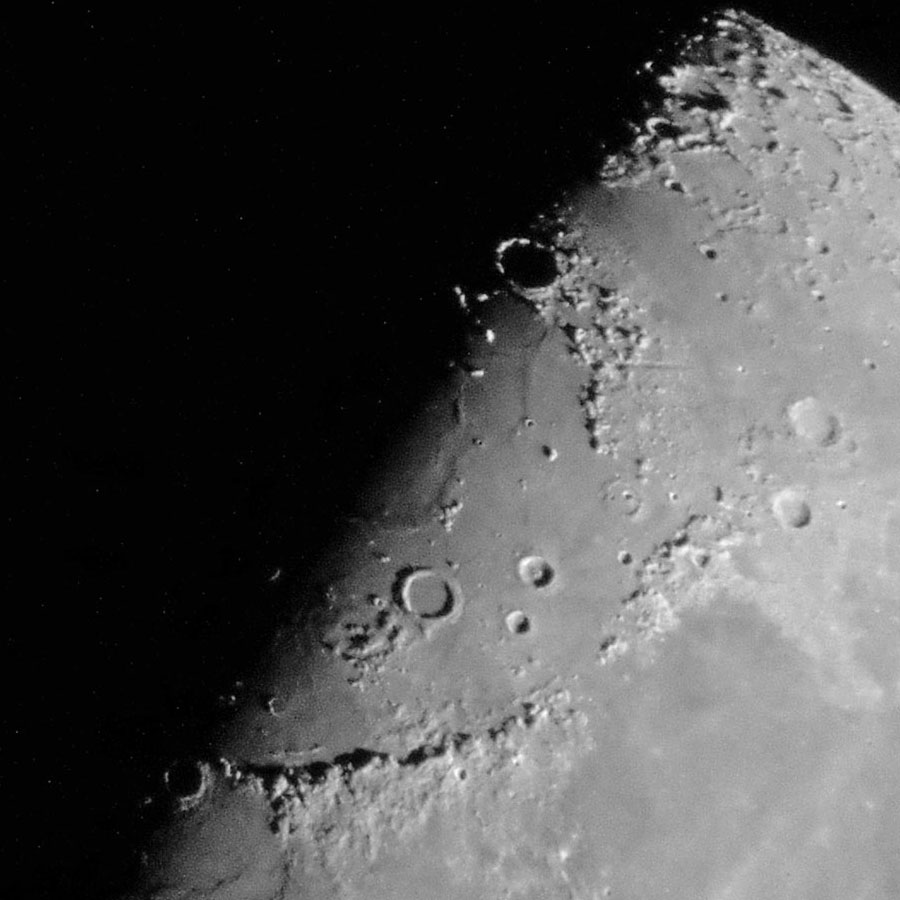 |
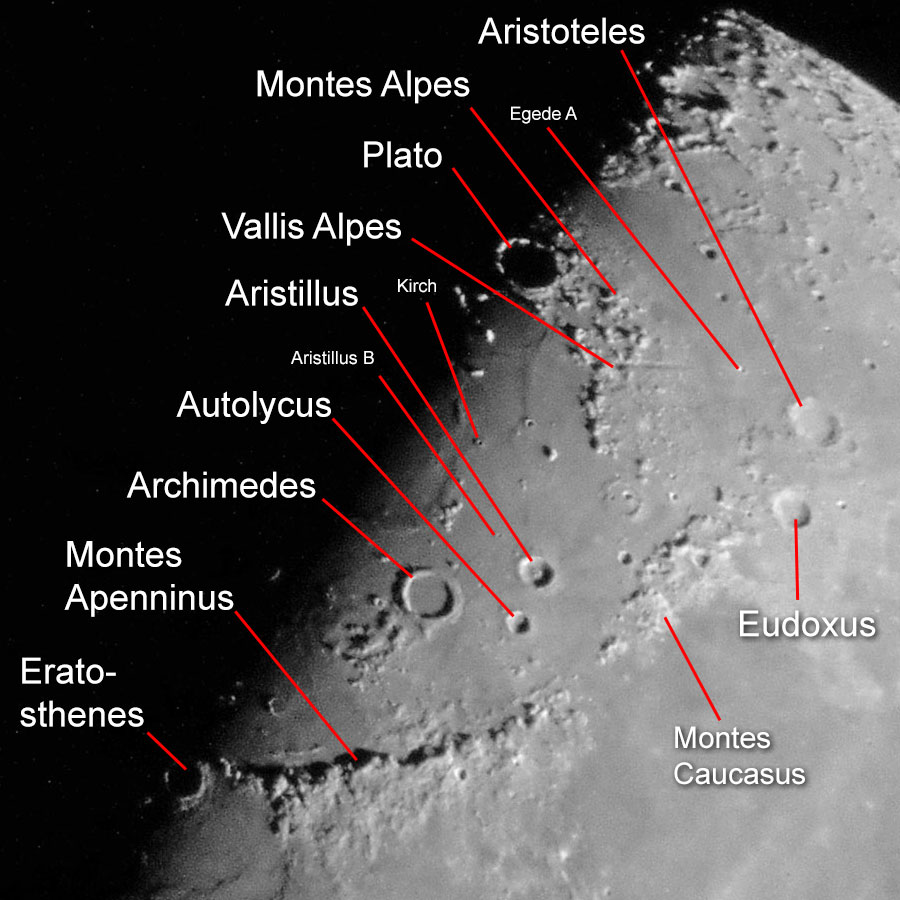 |
Photo data: February 23, 2018, Sky-Watcher Skymax-102 telescope, Ricoh GR held to the eyepiece
Plato and Copernicus
On February 24, 2018 (one day after Half Moon), the crater Copernicus appeared very nicely in the center at the terminator. Two sections showing the craters Kopernikus (bottom left) and Plato (top center).
Bancroft (13 km diameter), Feuillee (10 km diameter), and Beer (10 km diameter) serve as examples of small craters that can be recognized.
 |
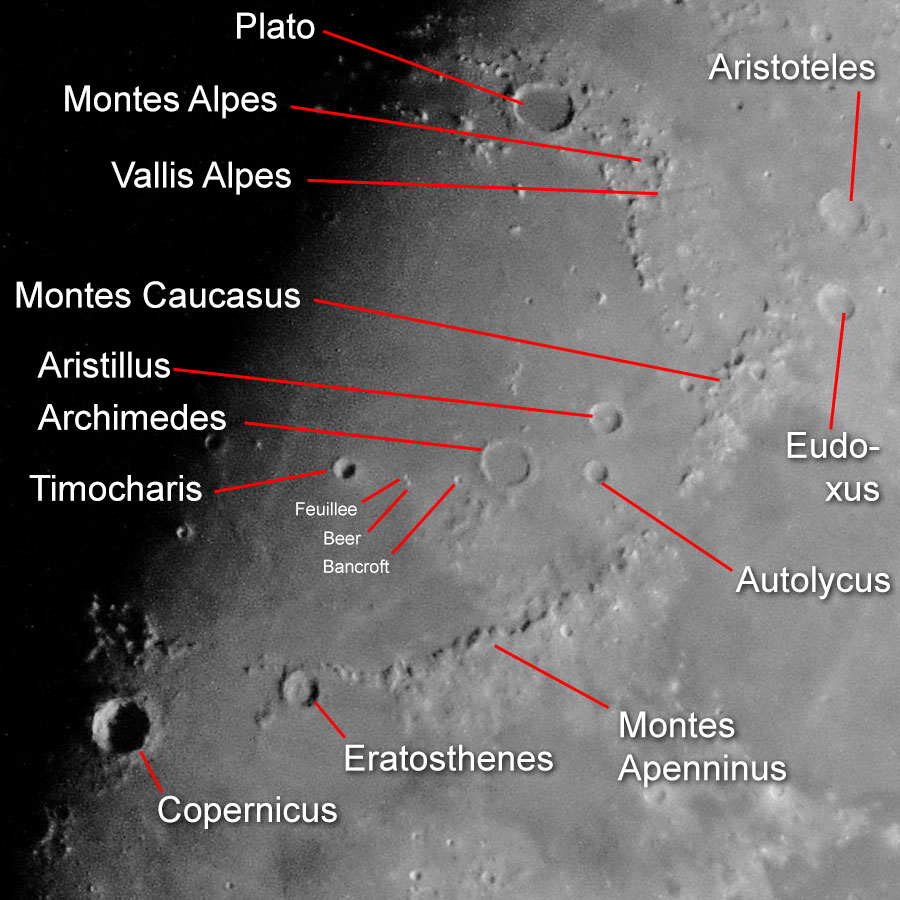 |
|
 |
 |
Photo data: February 24, 2018, Sky-Watcher Skymax-102 telescope, Ricoh GR held to the eyepiece
Jura Mountains, "Golden Handle"
On February 25, 2018 (two days after Half Moon), the Jura mountains looked very nicely in the North at the terminator. Two sections showing the Jura moutains (top left) and the craters Plato (top) and Copernicus (bottom). When the Jura mountains appear at the terminator and are lighted by the sun while still extending "into the darkness", this phenomenon is called the "golden handle."
Bancroft (13 km diameter), Feuillee (10 km diameter), and Beer (10 km diameter) serve as examples of small craters that can be recognized.
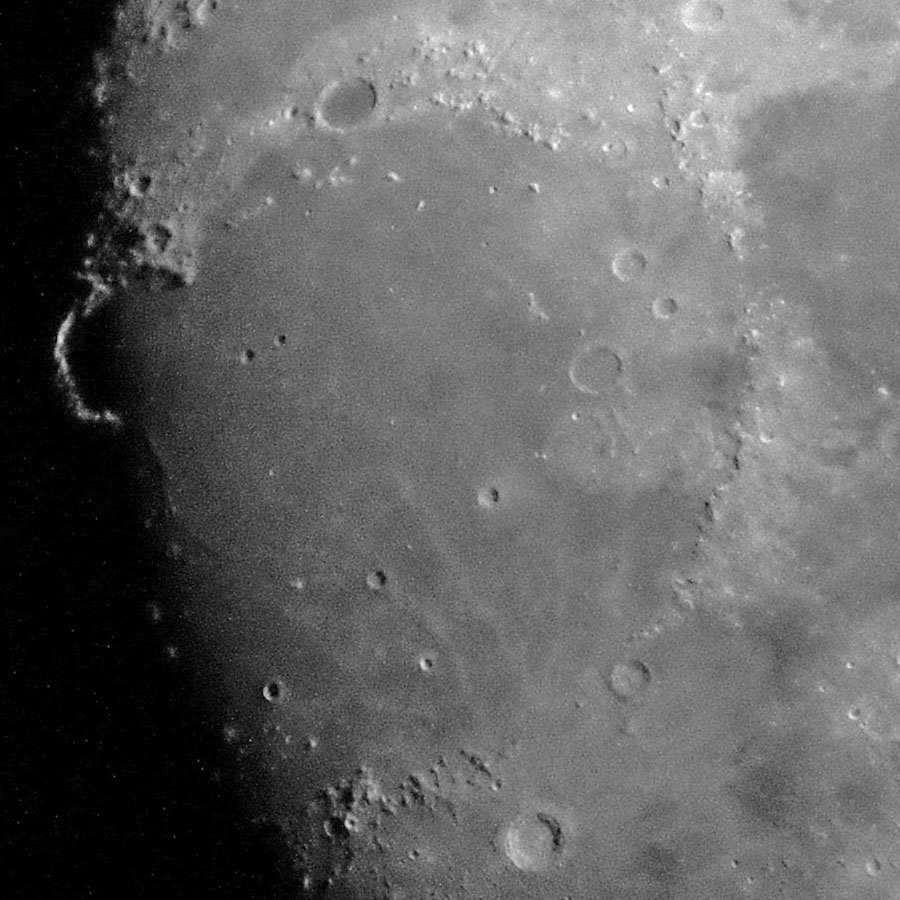 |
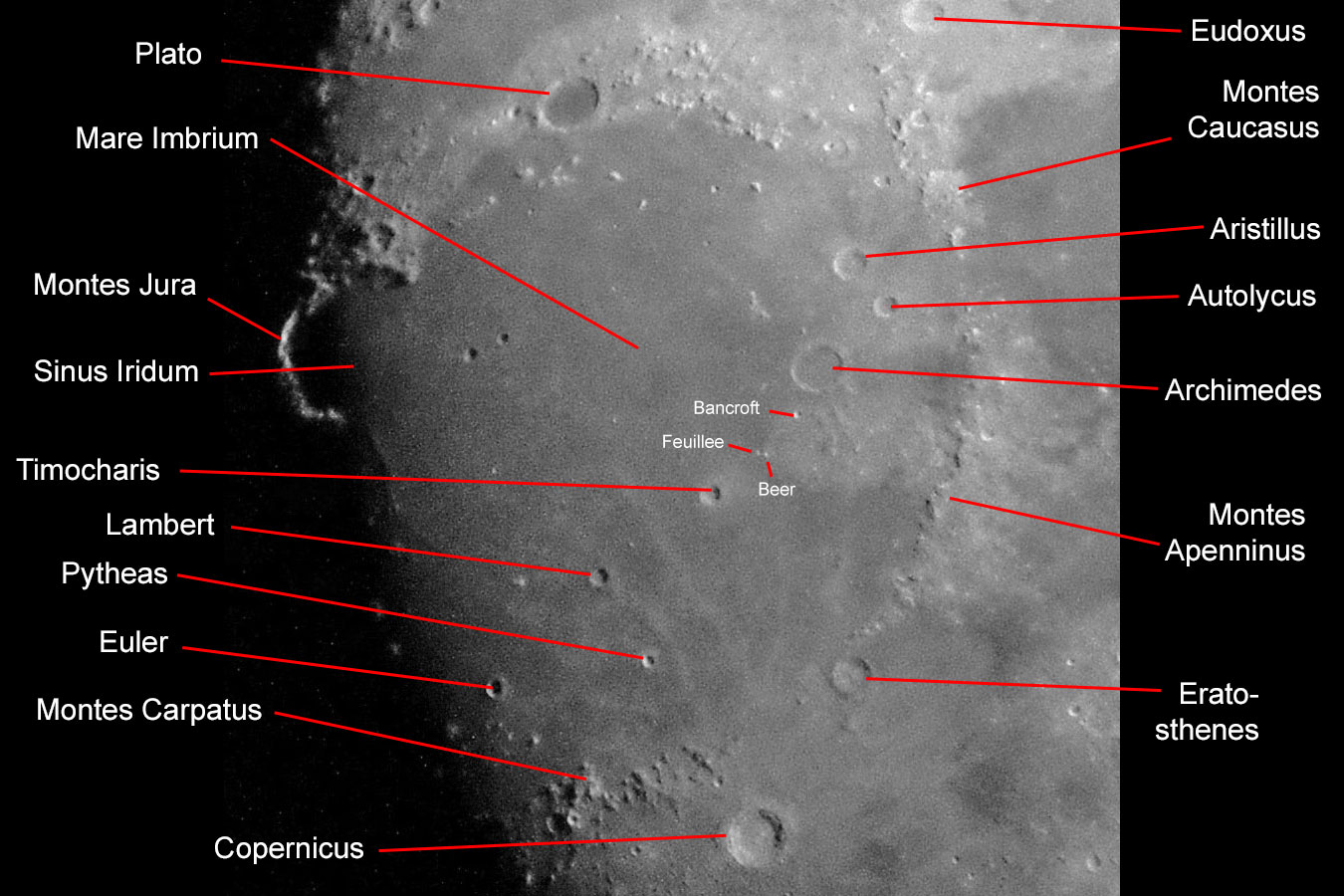 |
|
Note the "golden handle"! |
||
 |
 |
|
Note the "golden handle"! |
||
Photo data: February 25, 2018, Sky-Watcher Skymax-102 telescope, Ricoh GR held to the eyepiece
One day later, the terminator has left the Jura mountains. The following section from February 26, 2018 (three days after Half Moon) has been made lighter and shows again the Jura mountains (top left) and the craters Plato (top) and Copernicus (bottom). Above and to the left of Copernicus you will find the Montes Carpatus.
T. Mayer D (8,6 km diameter), Brayley (15 km diameter) and Brayley C (9 km diameter) serve as examples of small craters that can be recognized on the photo.
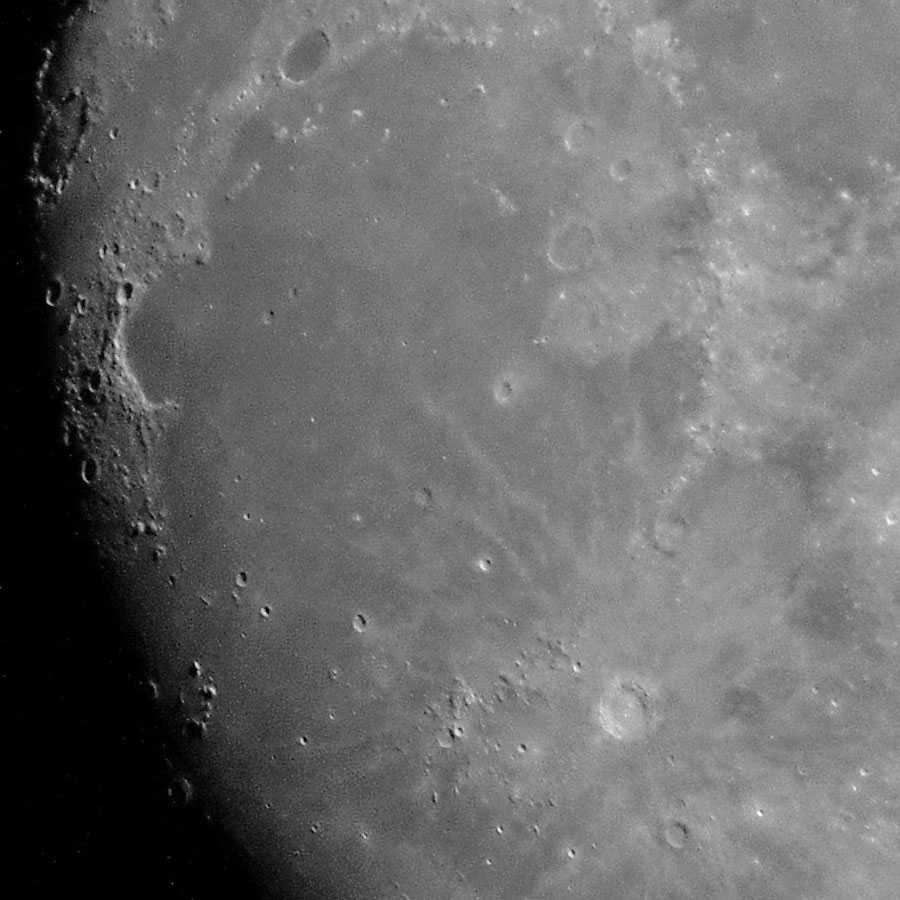 |
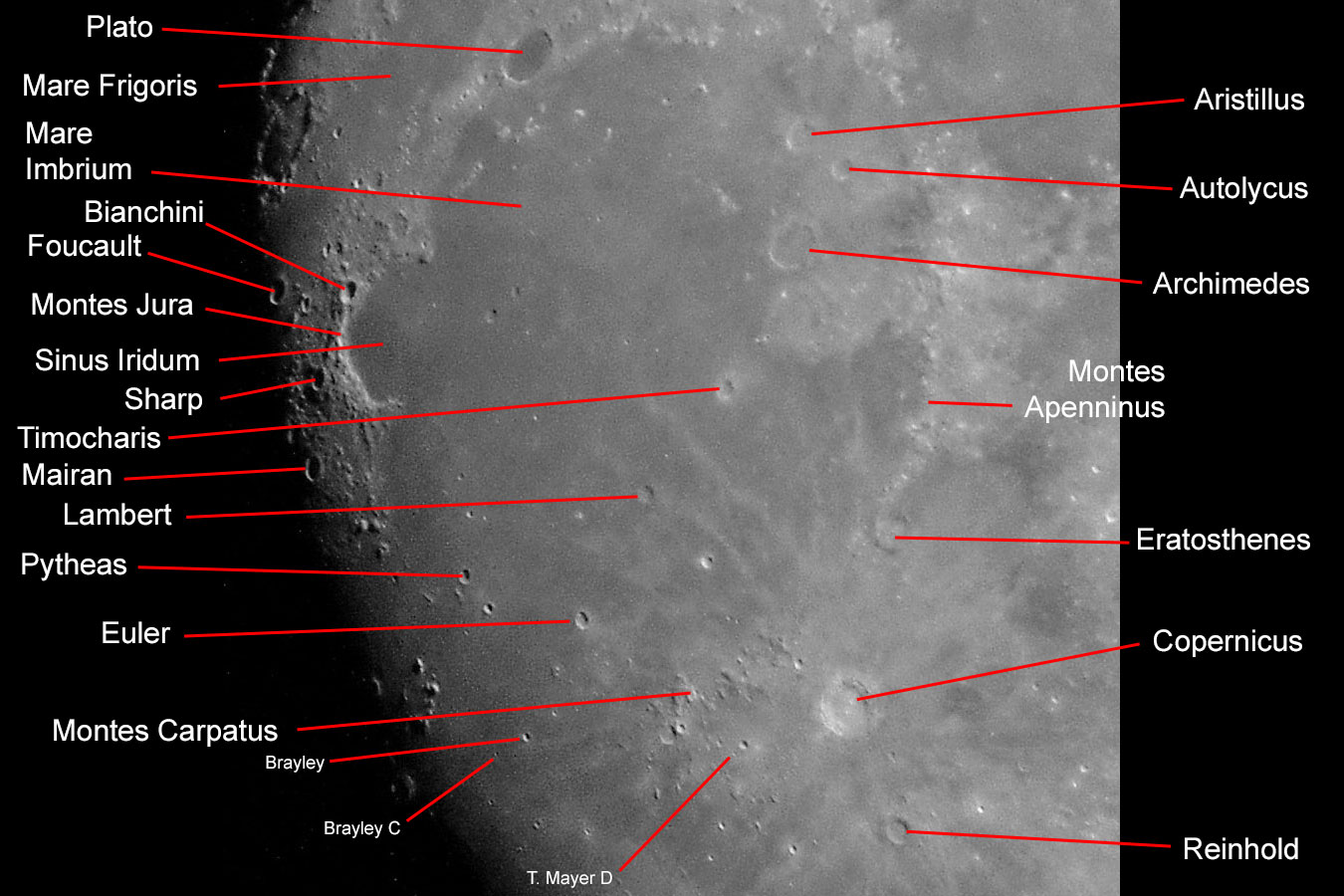 |
Photo data: February 26, 2018, Sky-Watcher Skymax-102 telescope, Ricoh GR held to the eyepiece
Maria and more...
Two sections from a photo of the moon that was taken with the Sky-Watcher Explorer 150PDS telescope and the camera held to the eyepiece ( Mai 5, 2017, two days after Half Moon, which took place on May 3, 2017).
Bode B (10,2 km diameter) und Hipparchus L (13 km diameter) serve as examples of small craters that can be recognized.
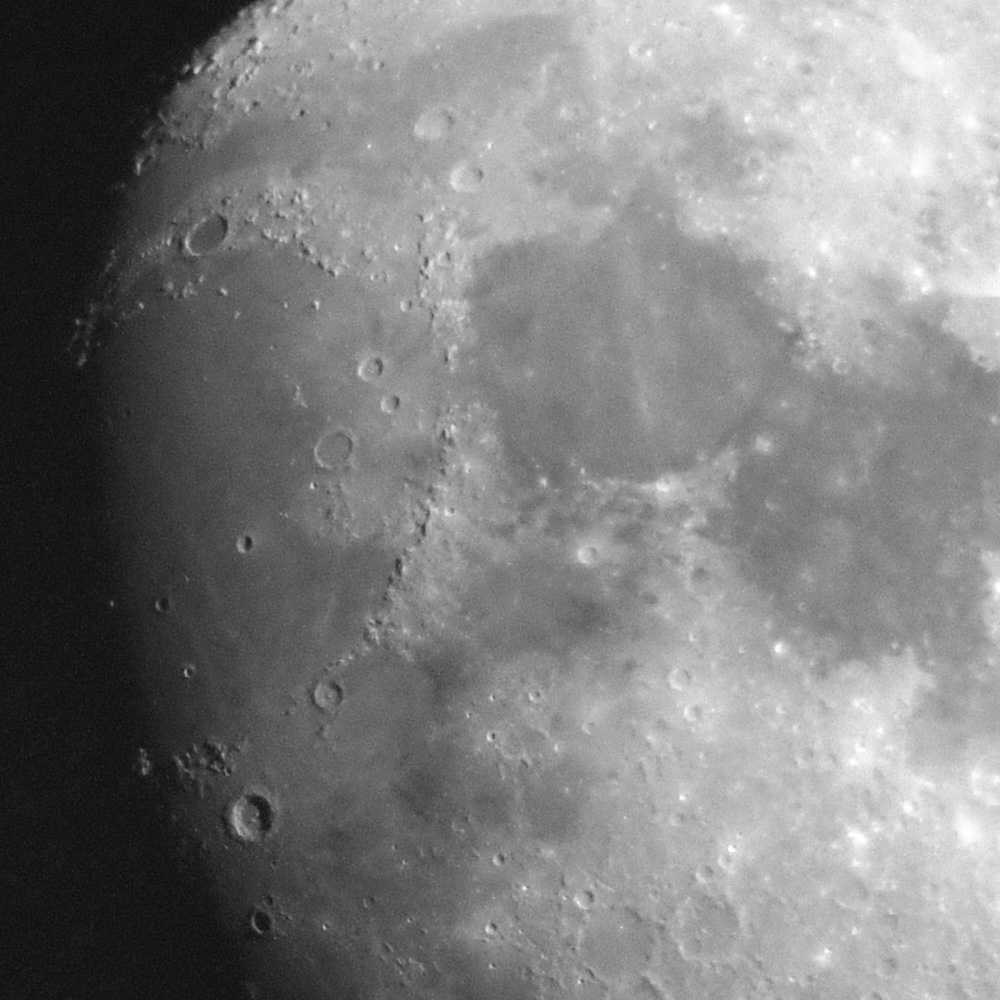 |
||
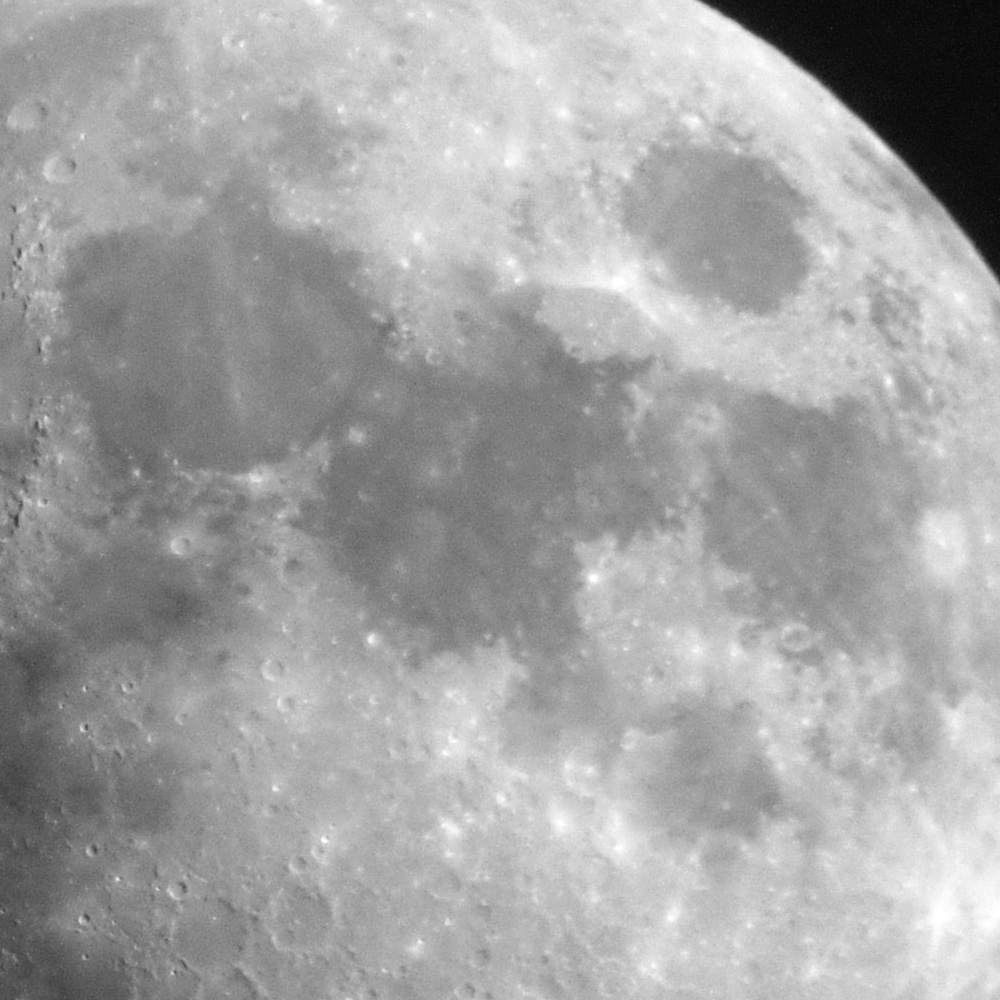 |
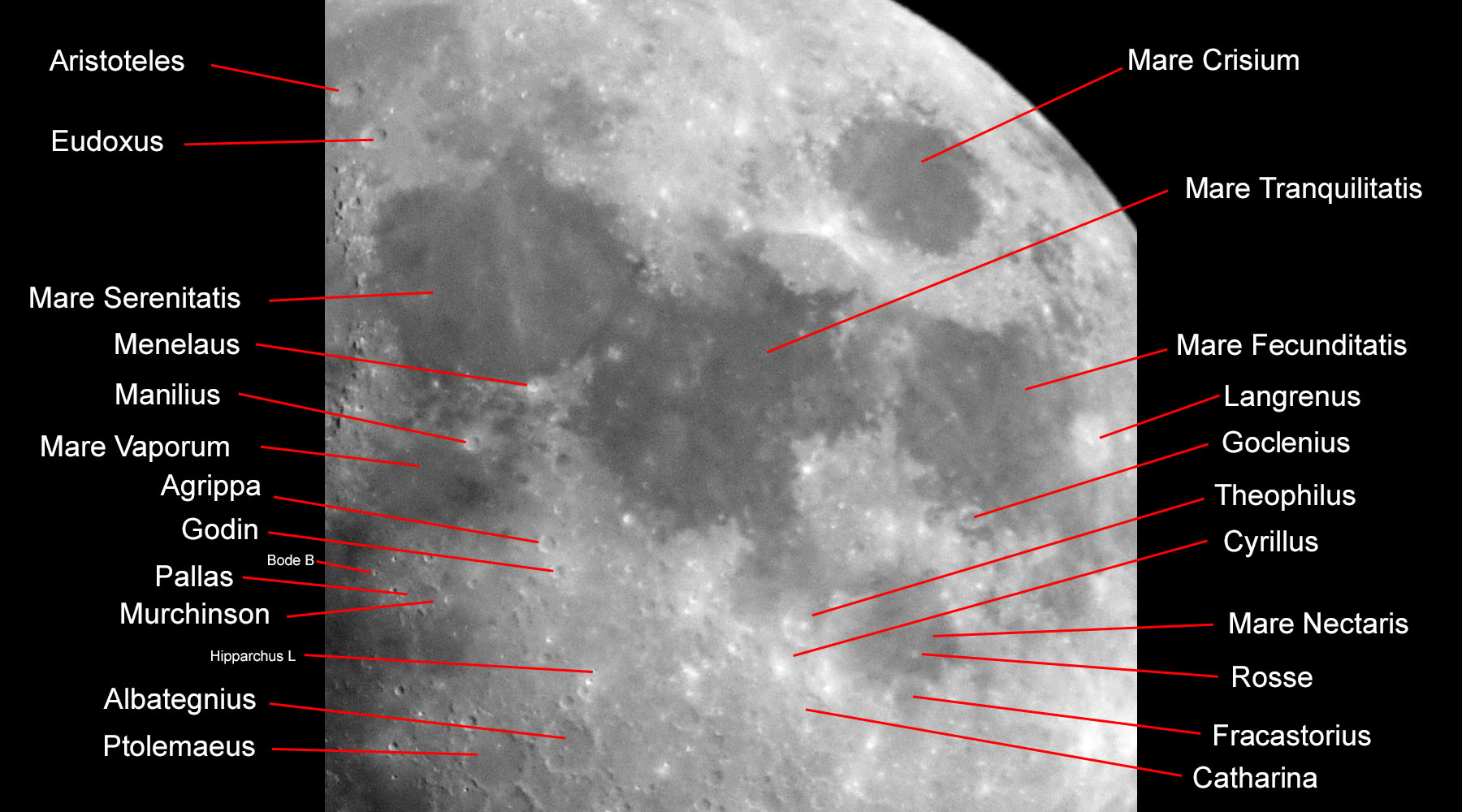 |
|
Photo data: May 5, 2017, Sky-Watcher Sky-Watcher Explorer 150PDS telescope, Ricoh GR held to the 16 mm UWA eyepiece
North and Center
The following two sections originate from a moon photo that was taken on April 4, 2017, shortly after the day had begun - on April 3rd was Half Moon. The photos was taken with the Sky-Watcher Skymax-102 OTA and again with the camera held to the eyepiece
Luther (10 km diameter) and diameter P (15 km diameter) serve as examples of small craters that can be recognized on the upper photo, Ritter B (14 km diameter) und Hipparchus L (13 km diameter) on the lower one.
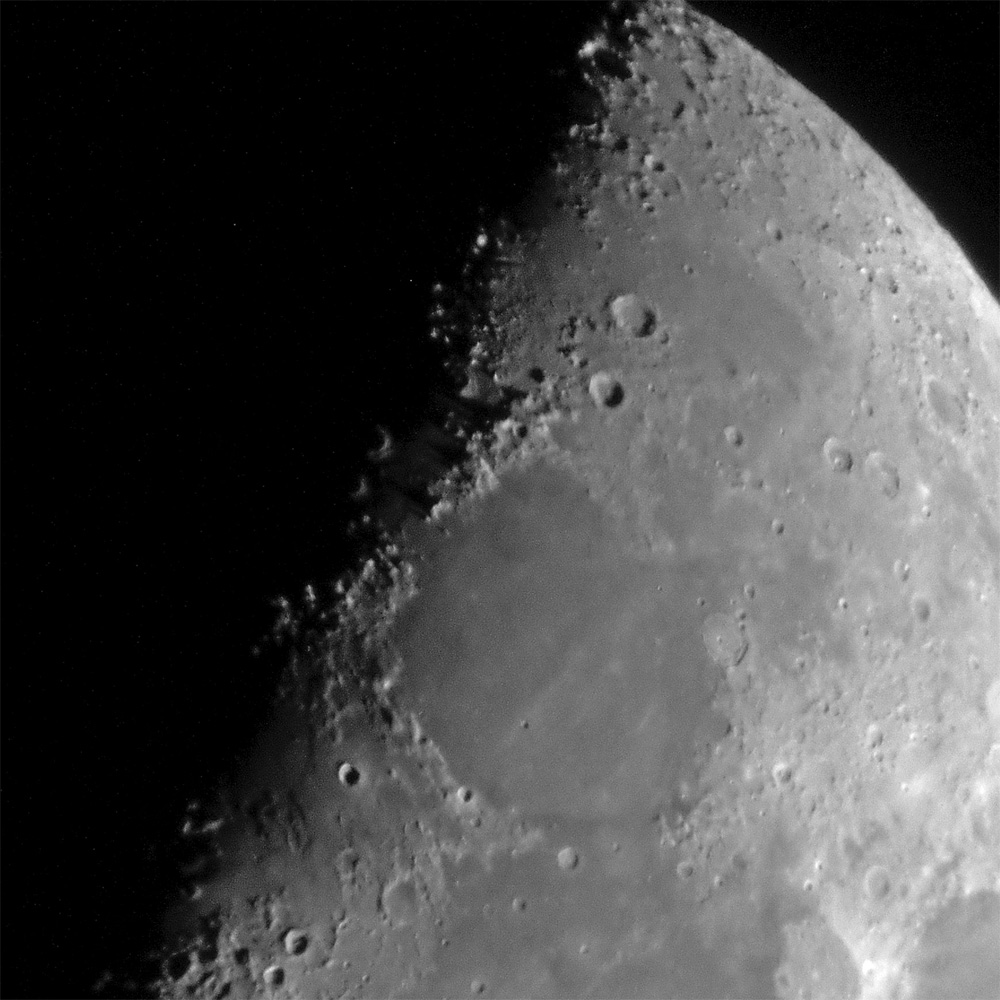 |
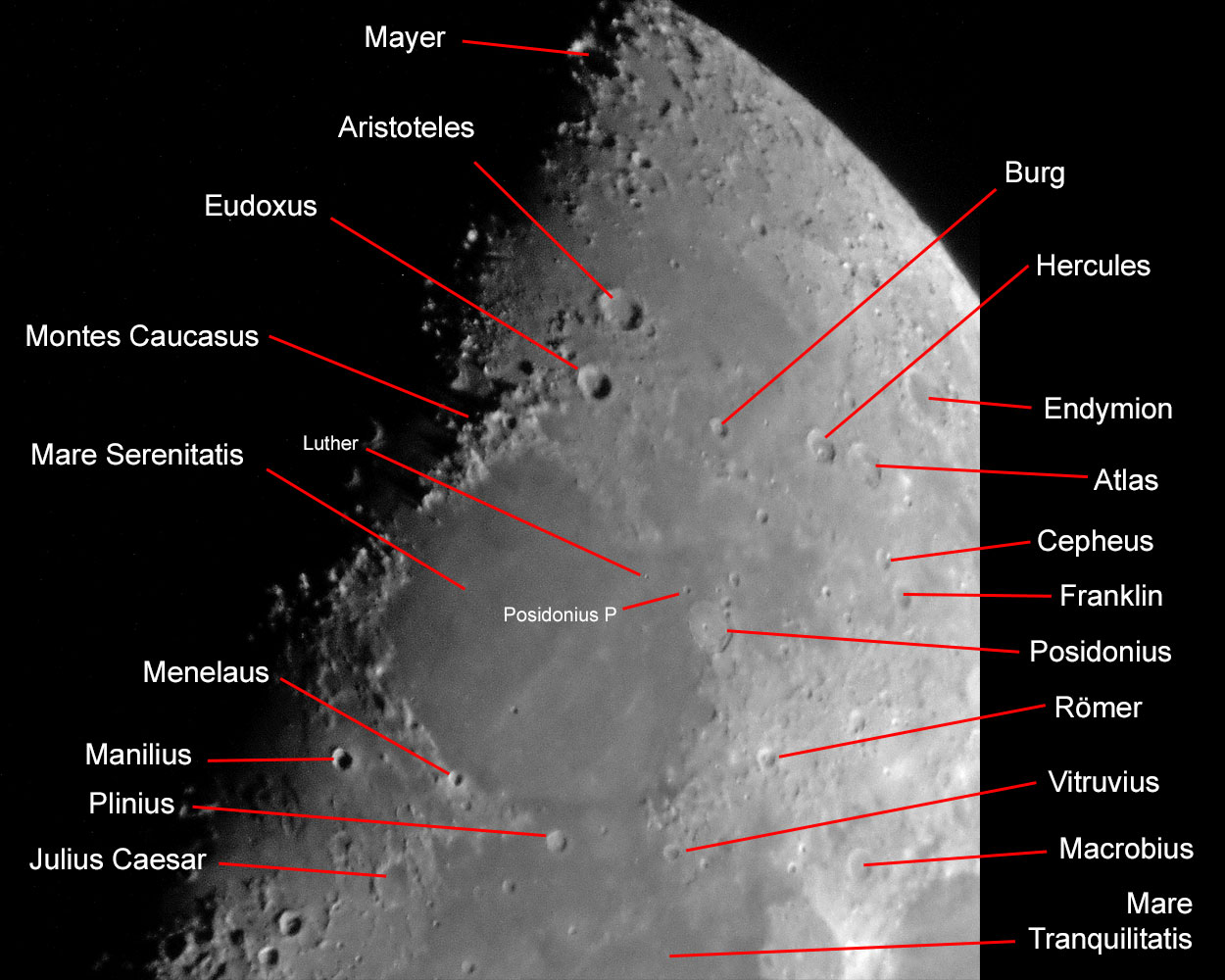 |
|
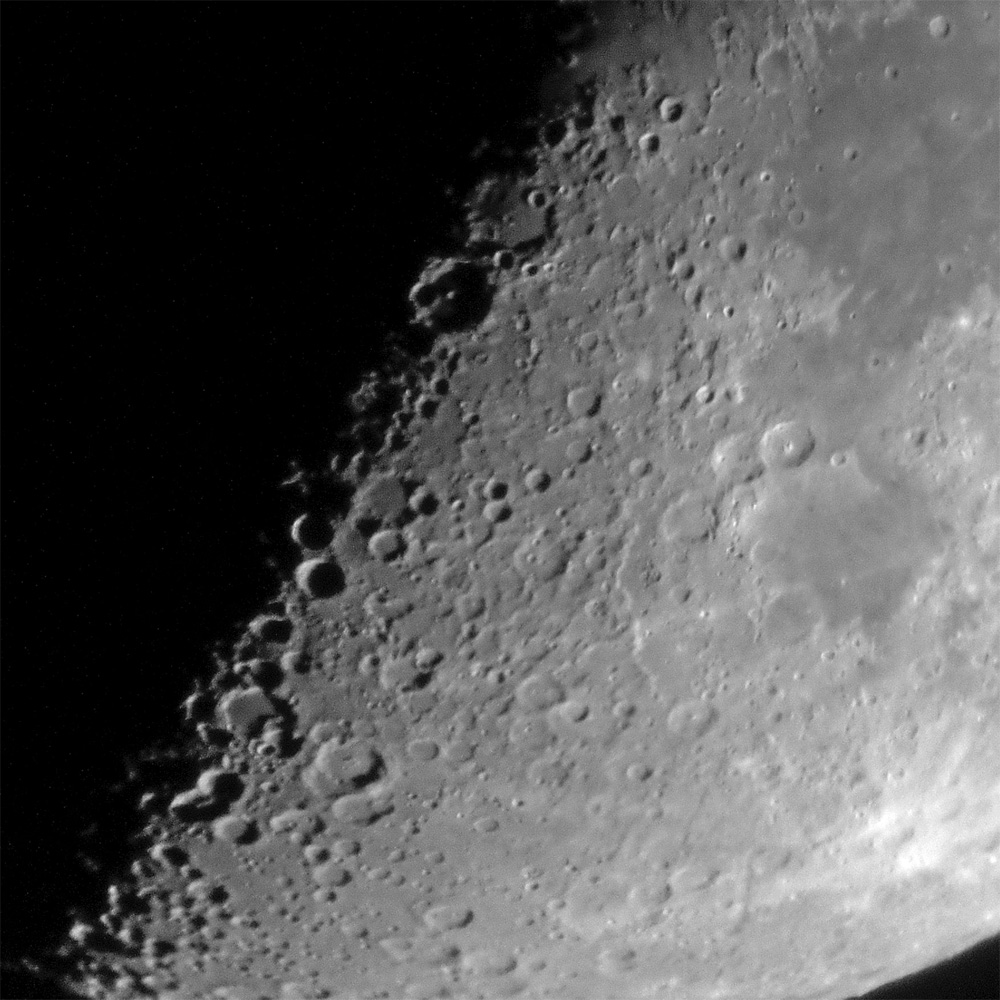 |
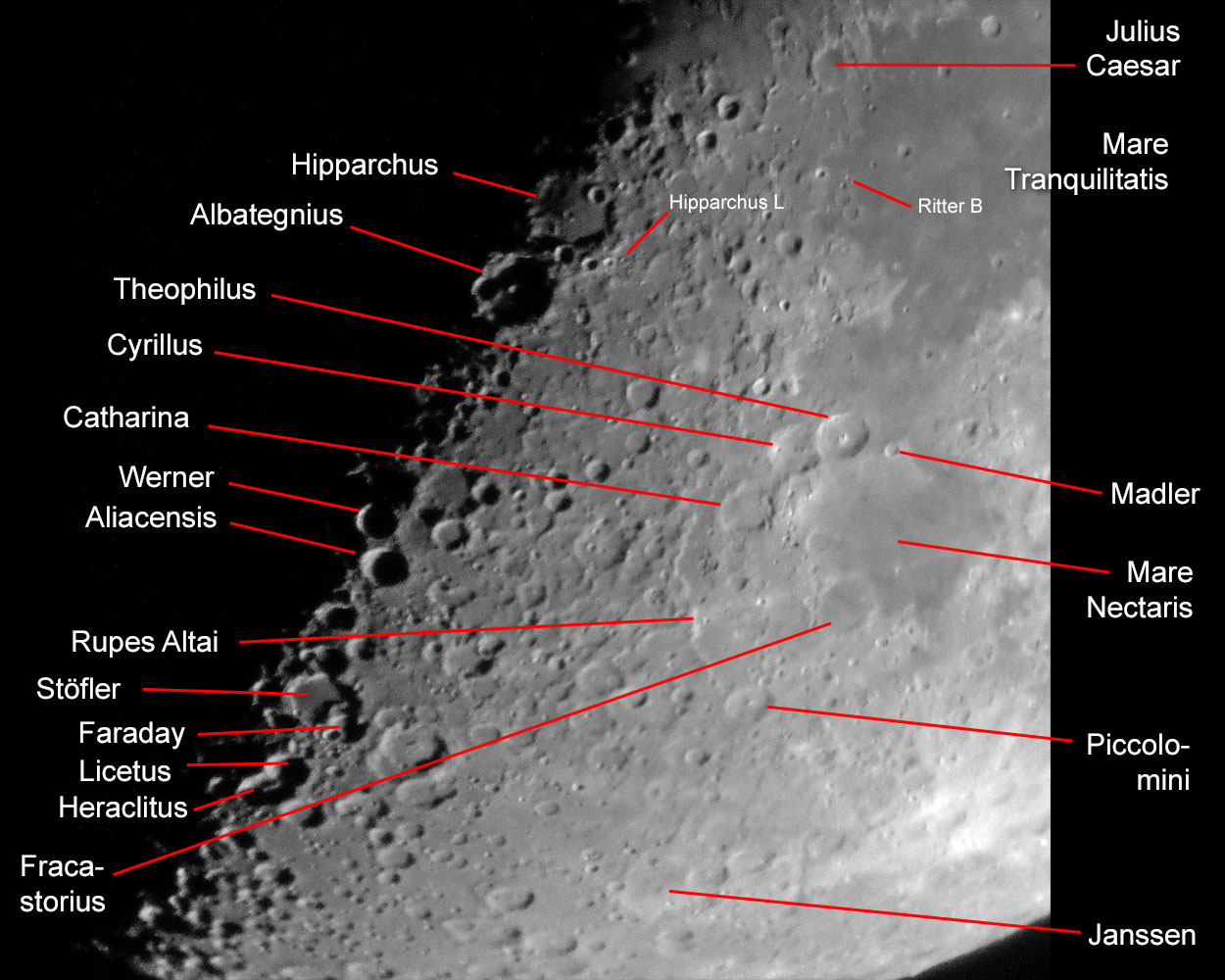 |
Photo data: April 4, 2017 just after midnight, Sky-Watcher Skymax-102 telescope, Ricoh GR held to the 16 mm UWA eyepiece
The following section was taken from a photo of the moon that was taken on February 22, 2018, one day before Half Moon. The photo was taken with a Sky-Watcher Skymax-127 and the canera was once again held to the eyepiece.
Ritter B (14 km diameter), Ritter D (7 km diameter, hard to see) and Hipparchus L (13 km diameter) serve as examples of small craters that can be recognized.
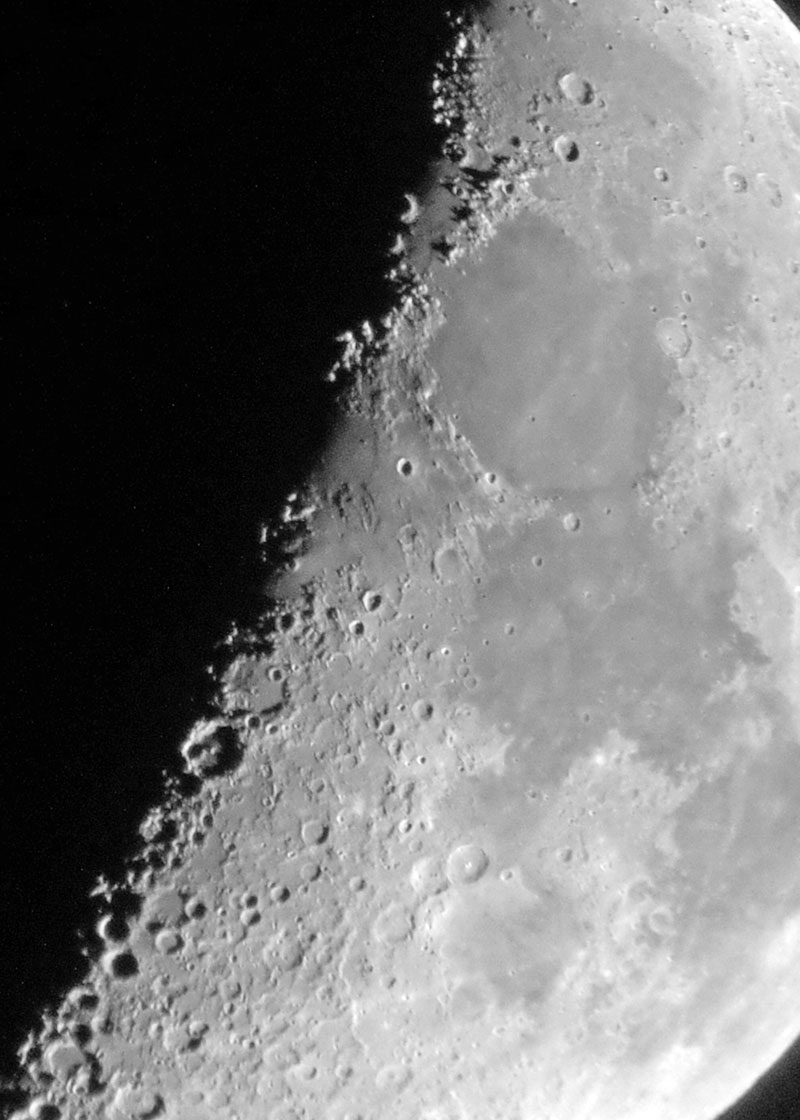 |
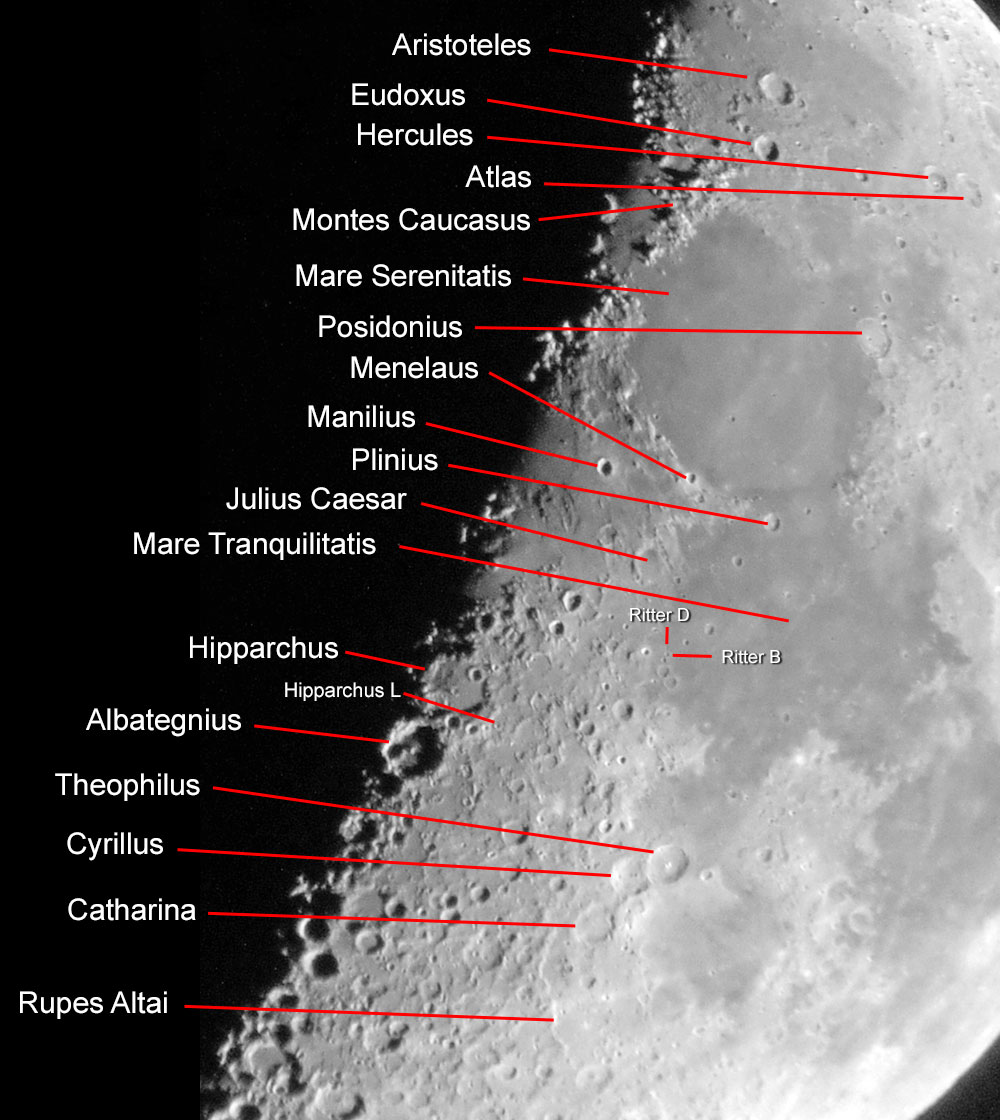 |
Photo data: February 22, 2018, Sky-Watcher Skymax-127 telescope, Ricoh GR held to the 32 mm Plössl eyepiece
References
- Mond (Wikipedia): de.wikipedia.org/wiki/Mond
- Moon (Wikipedia): en.wikipedia.org/wiki/Moon
- Lambert Spix (2013, 3. Auflage). moonscout - Mondmeere, Krater und Gebirge einfach finden und beobachten. Oculum-Verlag. ISBN 978-3-938469-58-3
- Lambert Spix & Frank Gasparini (2011, 1. Auflage). Der Moonhopper. Oculum-Verlag. ISBN 978-3-938469-54-5
- Ronald Stoyan, Hans-Georg Purucker (2013, 1. Auflage). Reiseatlas Mond. Oculum-Verlag. ISBN 978-3-938469-64-4
- Virtual Moon Atlas: ap-i.net/avl/en/start
| 31.10.2018 |
